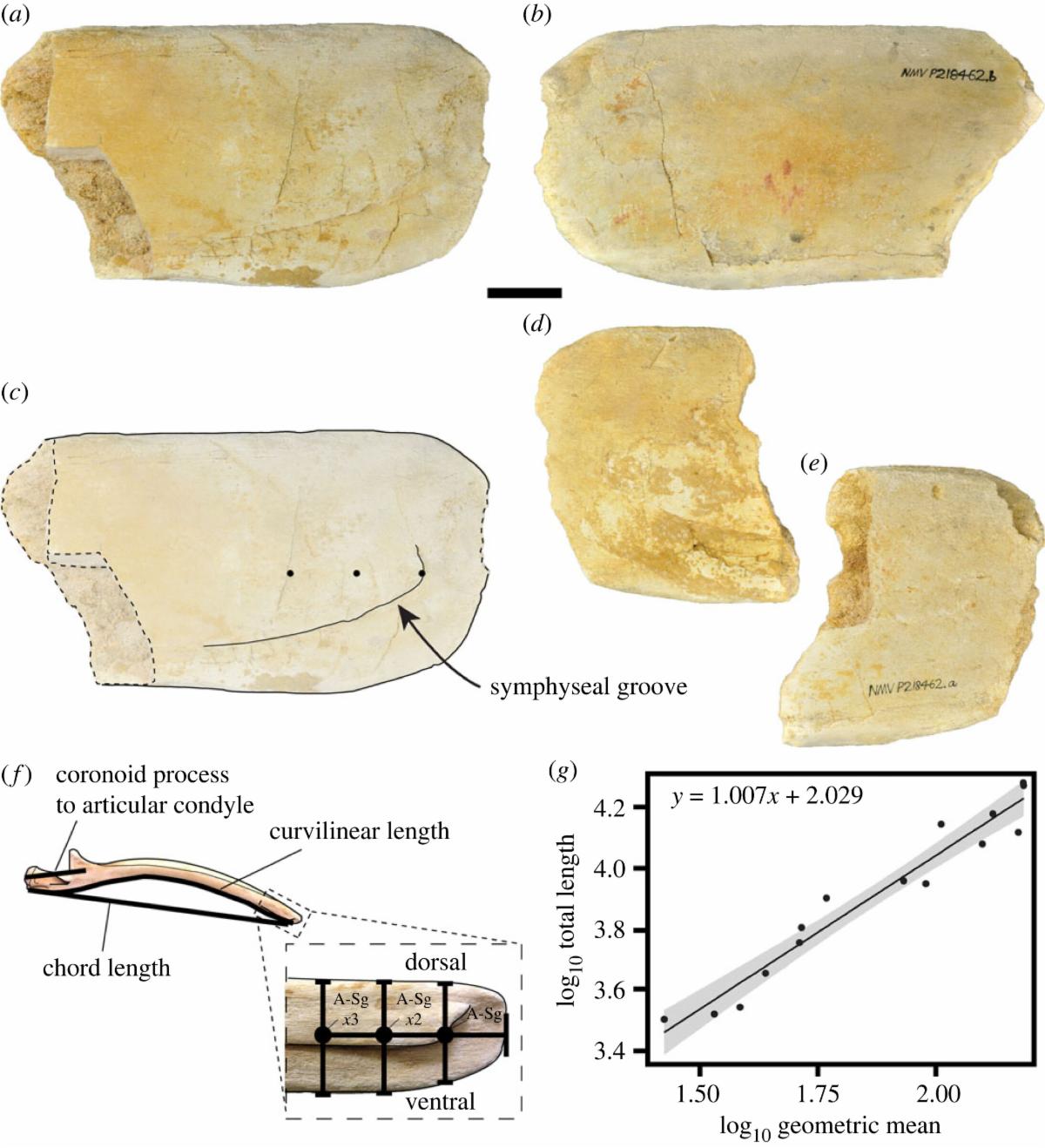巨型须鲸起源于寒冷的南方摇篮
作者:James P. Rule, Ruairidh J. Duncan, Felix G. Marx, Tahlia I. Pollock, Alistair R. Evans & Erich M.G. Fitzgerald
期刊:Proceedings of the Royal Society B: Biological Sciences
须鲸(须鲸亚目mysticetes),包括地球上最大的动物。针对须鲸如何达到如此巨大的体型这一问题,学术界仍然存在争议,以往的研究主要关注须鲸亚目成员体型变大的时间,而不是地点。本文中,作者描述了来自南澳大利亚的无齿须鲸化石(21.12-16.39兆年(Ma)) 。据估计,它体长9米,是中新世早期最大的须鲸亚目动物。对不同时期鲸鱼体型的分析表明,南半球的古须鲸的体型比北方同类更大。尽管南半球的标本仅占全球须鲸亚目动物化石记录的19%,但在新生代的大部分时间里,这种模式似乎一直存在。作者的发现与先前的观点形成对比,即在上新世-更新世期间发生了体型向更大的尺寸转变的单一突变,作者将其解释为冰川驱动的北半球现象。作者的研究结果强调了将南半球化石纳入宏观进化模式的重要性,尤其应考虑到南大洋环境的高生产力。
(实习生刘熙茜编译)

Fig. 1 Chaeomysticete mandible fragments NMV P218462 (Museums Victoria) from the Aquitanian–Burdigalian of South Australia. Left mandible apex in (a) medial and (b) lateral views, and annotated medial view (c) with symphyseal groove and measurement landmarks highlighted. Right mandibular apex in (d) medial and (e) lateral views. Measurements taken from mandibles (f) for estimation of total body length (NMV C24936 Balaenoptera acutorostrata pictured). Resulting regression (g) of log10 total body length and log10 geometric mean of the mandible apex for estimating the total length of NMV P218462. Scale bar equals 50 mm.
Baleen whales (mysticetes) include the largest animals on the Earth. How they achieved such gigantic sizes remains debated, with previous research focusing primarily on when mysticetes became large, rather than where. Here, we describe an edentulous baleen whale fossil (21.12–16.39 mega annum (Ma)) from South Australia. With an estimated body length of 9 m, it is the largest mysticete from the Early Miocene. Analysing body size through time shows that ancient baleen whales from the Southern Hemisphere were larger than their northern counterparts. This pattern seemingly persists for much of the Cenozoic, even though southern specimens contribute only 19% to the global mysticete fossil record. Our findings contrast with previous ideas of a single abrupt shift towards larger size during the Plio-Pleistocene, which we here interpret as a glacially driven Northern Hemisphere phenomenon. Our results highlight the importance of incorporating Southern Hemisphere fossils into macroevolutionary patterns, especially in light of the high productivity of Southern Ocean environments.
Read more
James P. Rule et al, Giant baleen whales emerged from a cold southern cradle, Proceedings of the Royal Society B: Biological Sciences (2023). DOI: 10.1098/rspb.2023.2177








